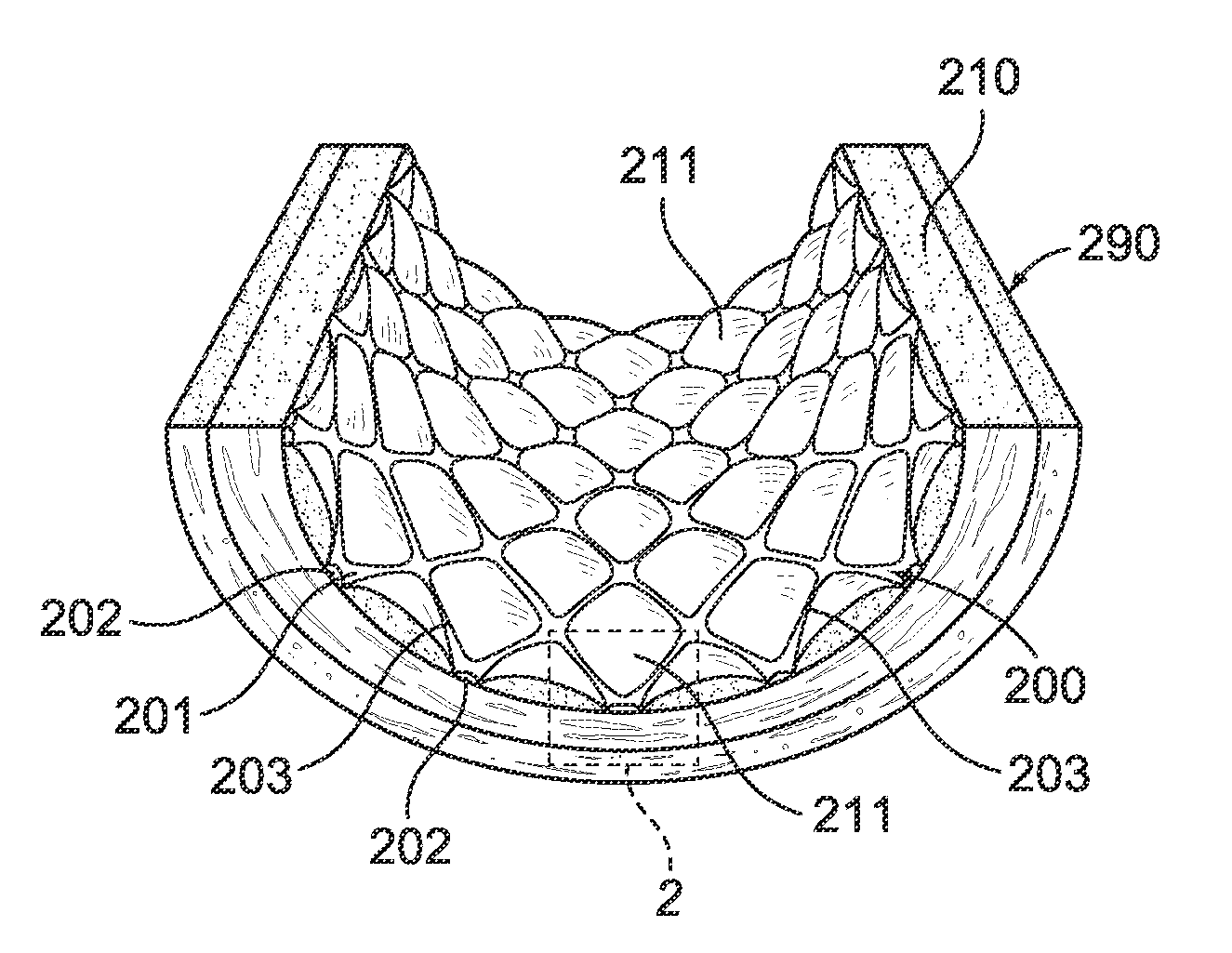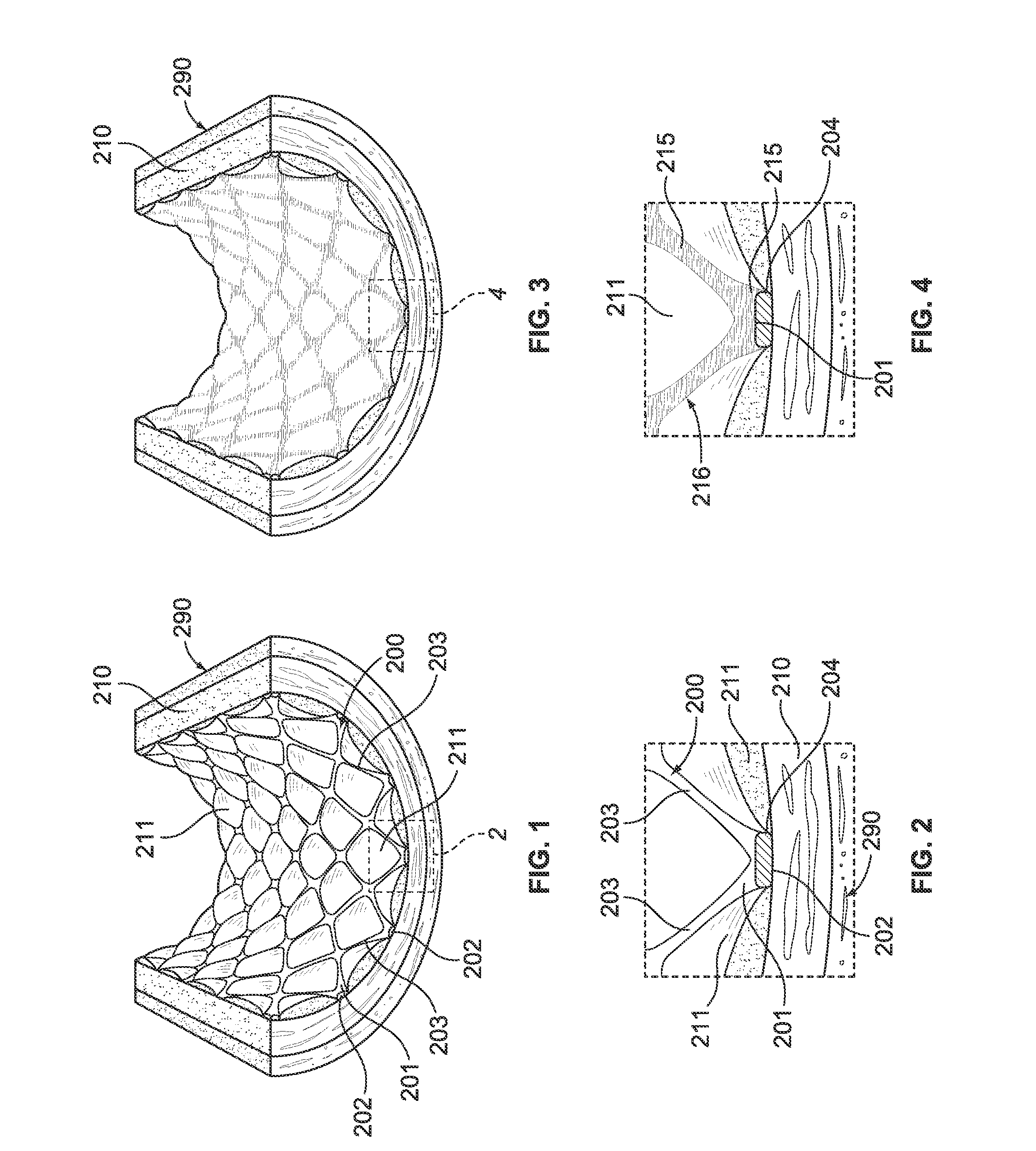Grooved drug-eluting medical devices and method of making same
a medical device and groove technology, applied in the field of grooved drug-eluting medical devices and the field of making same, can solve the problems of restenosis of the artery, serious logistical problems, and unsatisfactory surface topography, and achieve the rate of endothelial cell attachment and the migration rate of endothelial cells, and the inner surface of the stent is also increased. , the effect of rapid development of a healthy endothelium
- Summary
- Abstract
- Description
- Claims
- Application Information
AI Technical Summary
Benefits of technology
Problems solved by technology
Method used
Image
Examples
Embodiment Construction
[0054]With reference to FIGS. 1 and 2, an intravascular stent 200 is illustrated being disposed within an artery 290 in engagement with arterial wall 210. For illustrative purposes only, intravascular stent 200, shown in FIGS. 1-6 is a Palmaz.™. balloon-expandable stent, as is known in the art, stent 200 having an inner surface 201 and an outer surface 202. FIGS. 1 and 2 illustrate stent 200 shortly after it has been placed within artery 290, and after stent 200 has been embedded into arterial wall 210, as is known in the art. FIGS. 1 and 2 illustrate what may be generally characterized as correct placement of an intravascular stent. Stent 200 preferably includes a plurality of metal members, or struts, 203, which may be manufactured of stainless steel, or other metal materials, as is known in the art. As illustrated in FIGS. 1 and 2, correct placement of stent 200 results in tissue mounds 211 protruding between the struts 203, after struts 203 have been embedded in the arterial wal...
PUM
| Property | Measurement | Unit |
|---|---|---|
| depth | aaaaa | aaaaa |
| depth | aaaaa | aaaaa |
| width | aaaaa | aaaaa |
Abstract
Description
Claims
Application Information
 Login to View More
Login to View More - R&D
- Intellectual Property
- Life Sciences
- Materials
- Tech Scout
- Unparalleled Data Quality
- Higher Quality Content
- 60% Fewer Hallucinations
Browse by: Latest US Patents, China's latest patents, Technical Efficacy Thesaurus, Application Domain, Technology Topic, Popular Technical Reports.
© 2025 PatSnap. All rights reserved.Legal|Privacy policy|Modern Slavery Act Transparency Statement|Sitemap|About US| Contact US: help@patsnap.com



